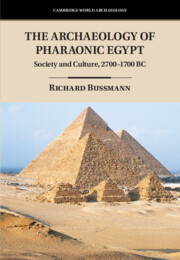Book contents
- The Archaeology of Pharaonic Egypt
- Cambridge World Archaeology
- The Archaeology of Pharaonic Egypt
- Copyright page
- Contents
- Preface
- Chronology of Egypt
- Abbreviations
- Part i Orientation
- Part ii Living Together
- Part iii Ritual and Discourse
- Part iv Organising People
- 10 Scaling the State
- 11 Archaeology beyond Elites
- 12 Civilisation at Grass-Roots Level
- Bibliography
- Index
11 - Archaeology beyond Elites
from Part iv - Organising People
Published online by Cambridge University Press: 06 February 2024
- The Archaeology of Pharaonic Egypt
- Cambridge World Archaeology
- The Archaeology of Pharaonic Egypt
- Copyright page
- Contents
- Preface
- Chronology of Egypt
- Abbreviations
- Part i Orientation
- Part ii Living Together
- Part iii Ritual and Discourse
- Part iv Organising People
- 10 Scaling the State
- 11 Archaeology beyond Elites
- 12 Civilisation at Grass-Roots Level
- Bibliography
- Index
Summary
By the early Old Kingdom, steep social hierarchies had developed in Egypt. A small group of individuals at the top seemed to hold the fate of the country in their hands, as only the ‛ruling classes’, to use Marxist-inspired terminology, commanded the resources to express their ideas and practices. In durable materials and at places favourable for preservation, the texts, inscriptions, paintings, sculpture, and monumental architecture commissioned by the elite shaped modern perceptions of ancient Egypt. Other types of evidence, such as the workmen’s huts, simple graves, and local community shrines discussed in this book seem merely to fill the gaps and are hardly ever used to develop alternative approaches to the traditional narrative.
- Type
- Chapter
- Information
- The Archaeology of Pharaonic EgyptSociety and Culture, 2700–1700 BC, pp. 317 - 352Publisher: Cambridge University PressPrint publication year: 2023

